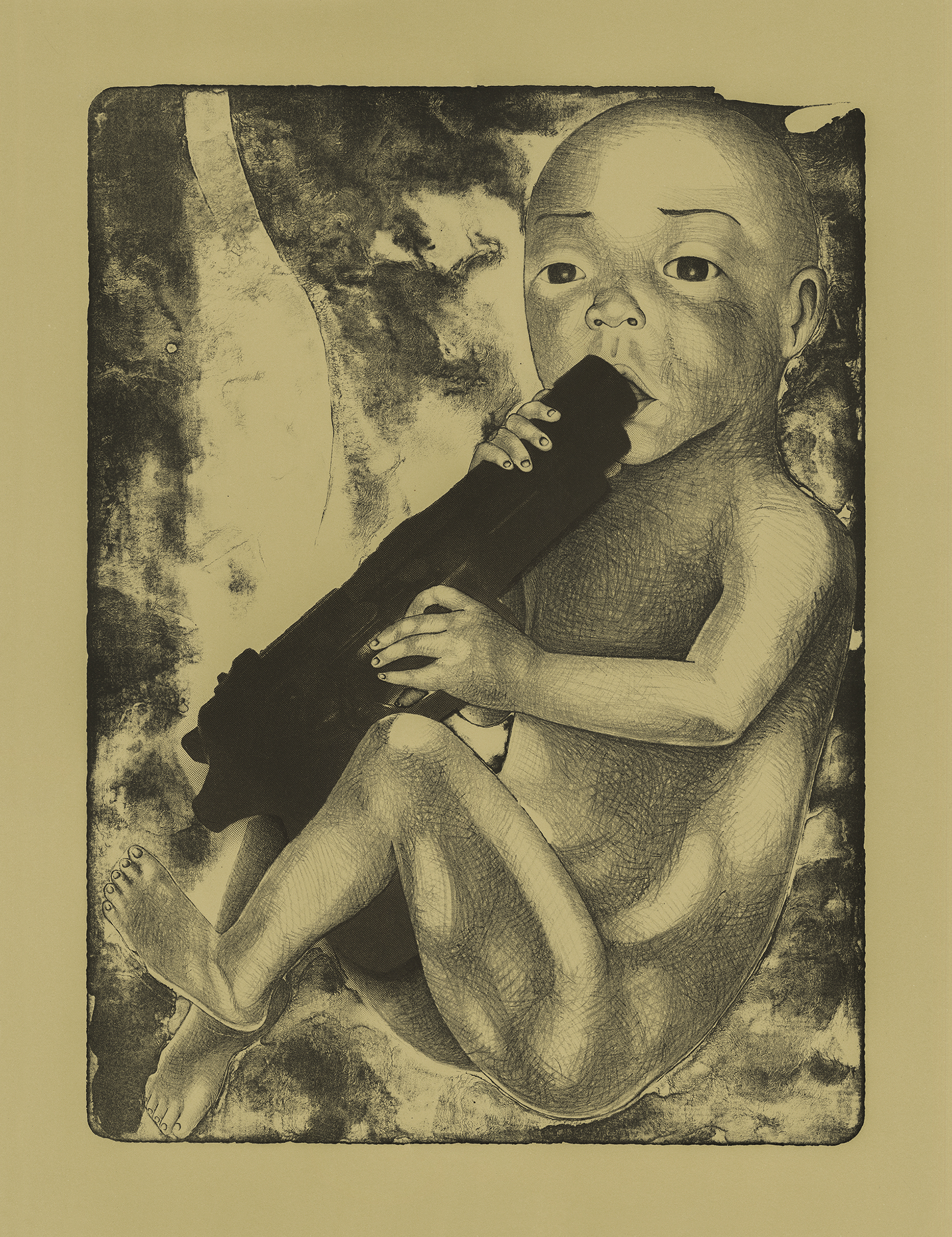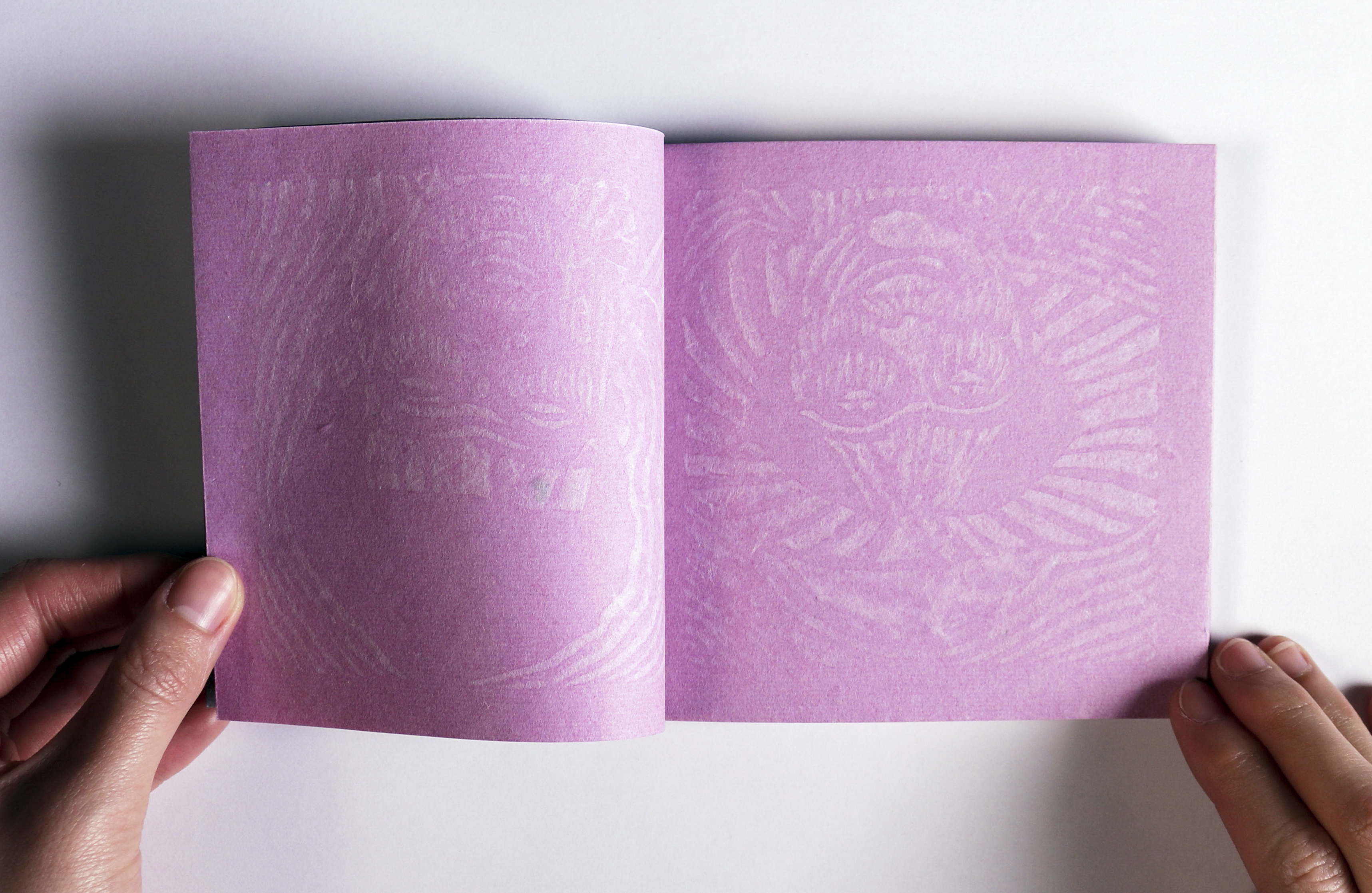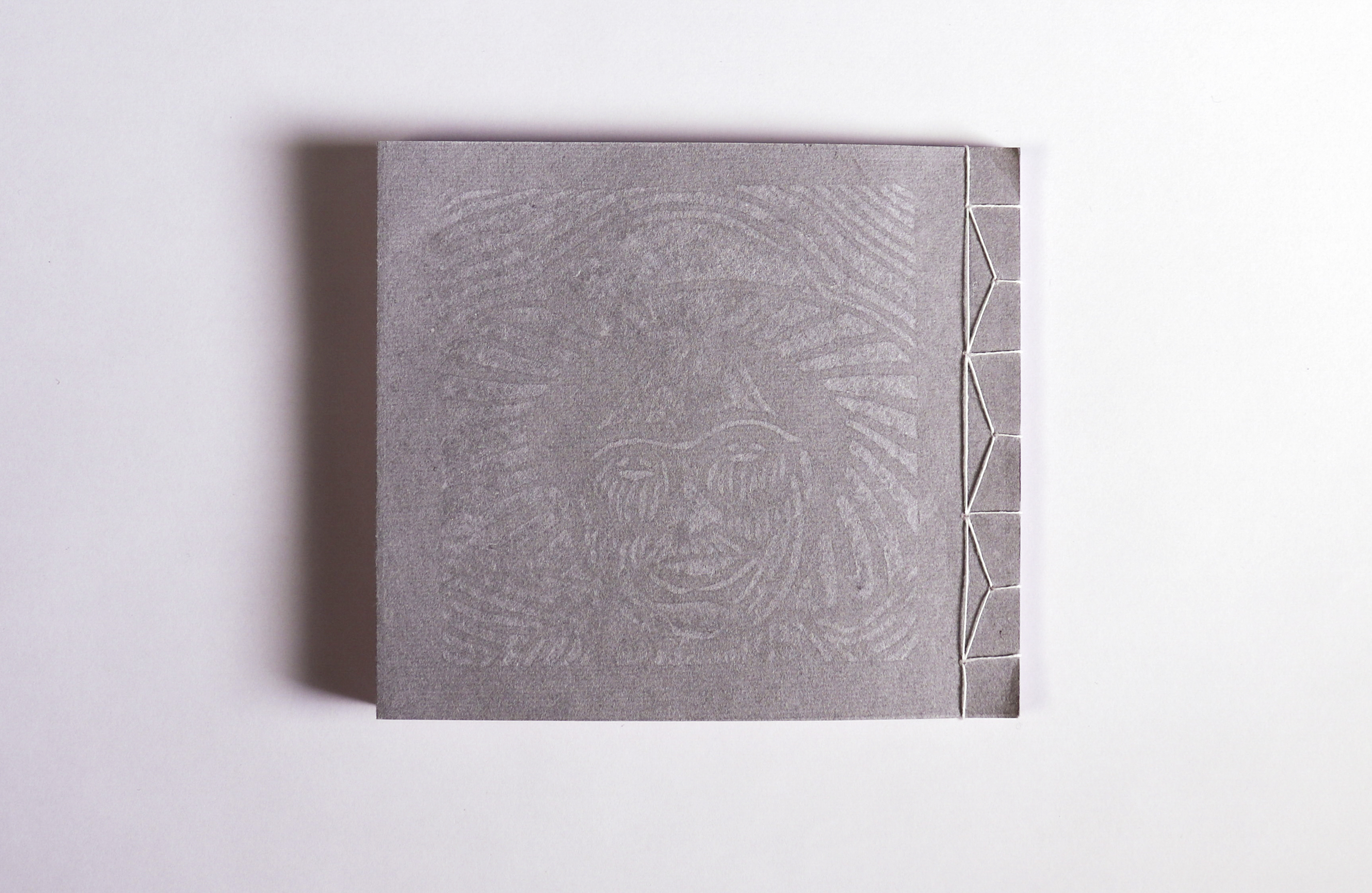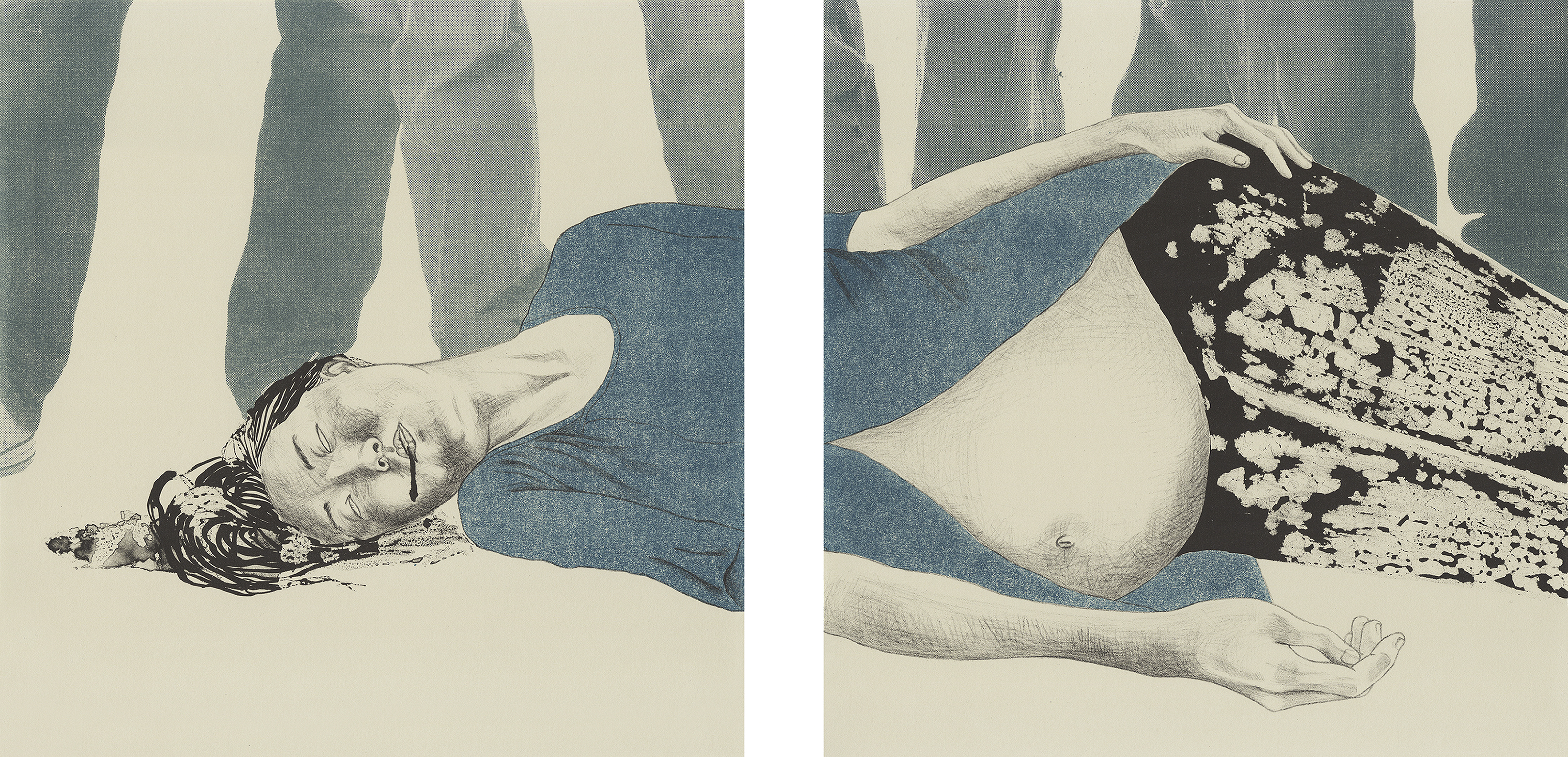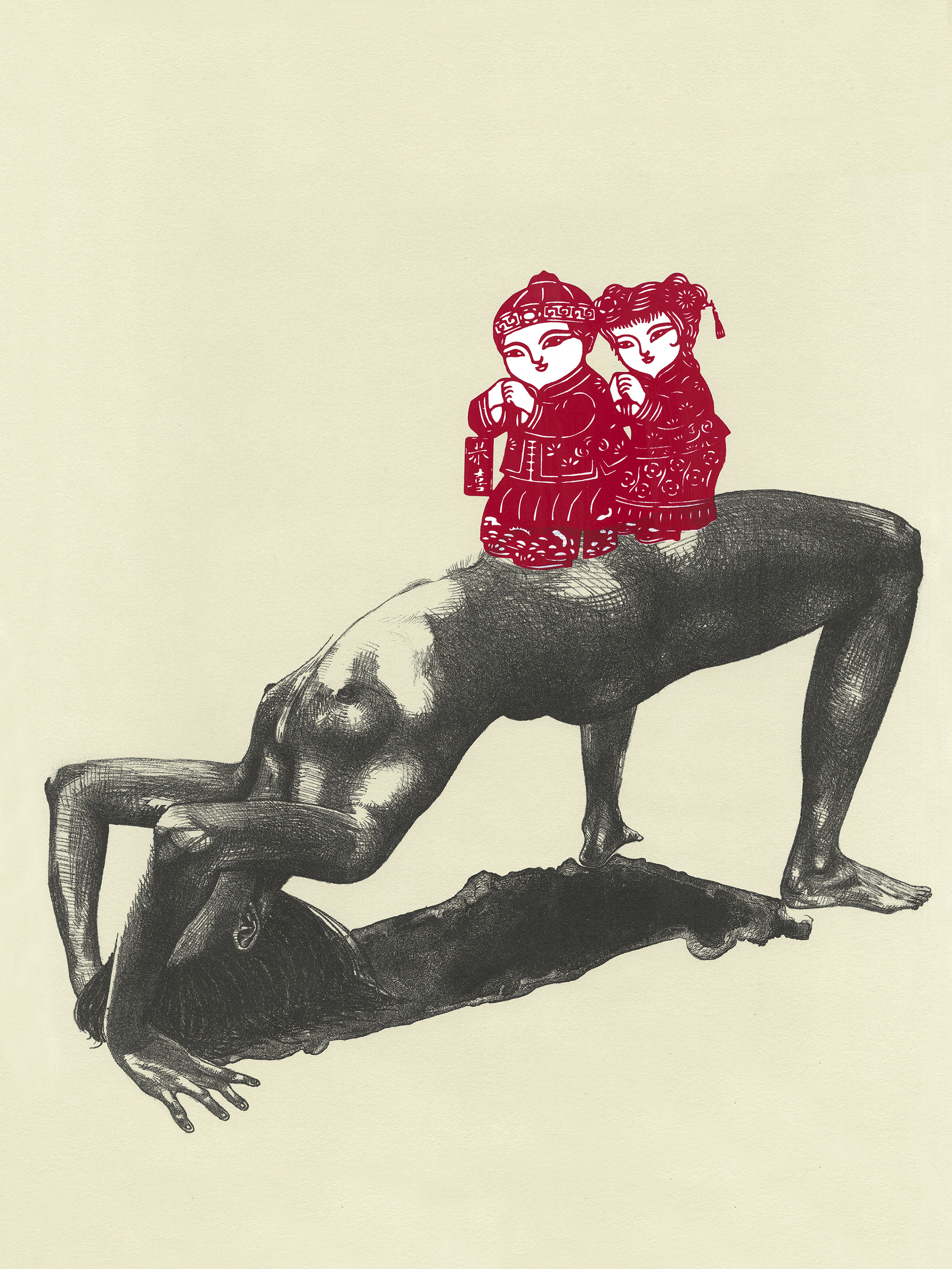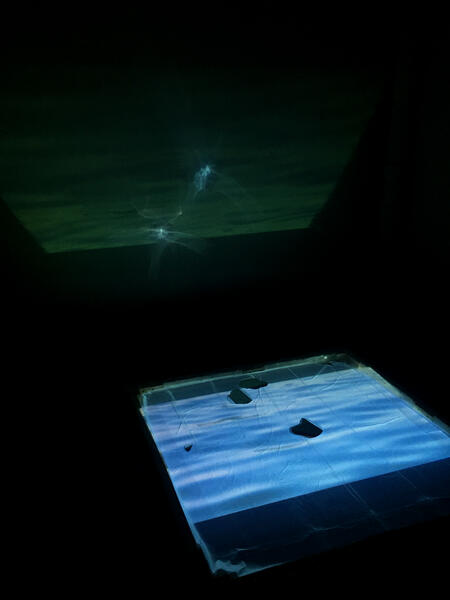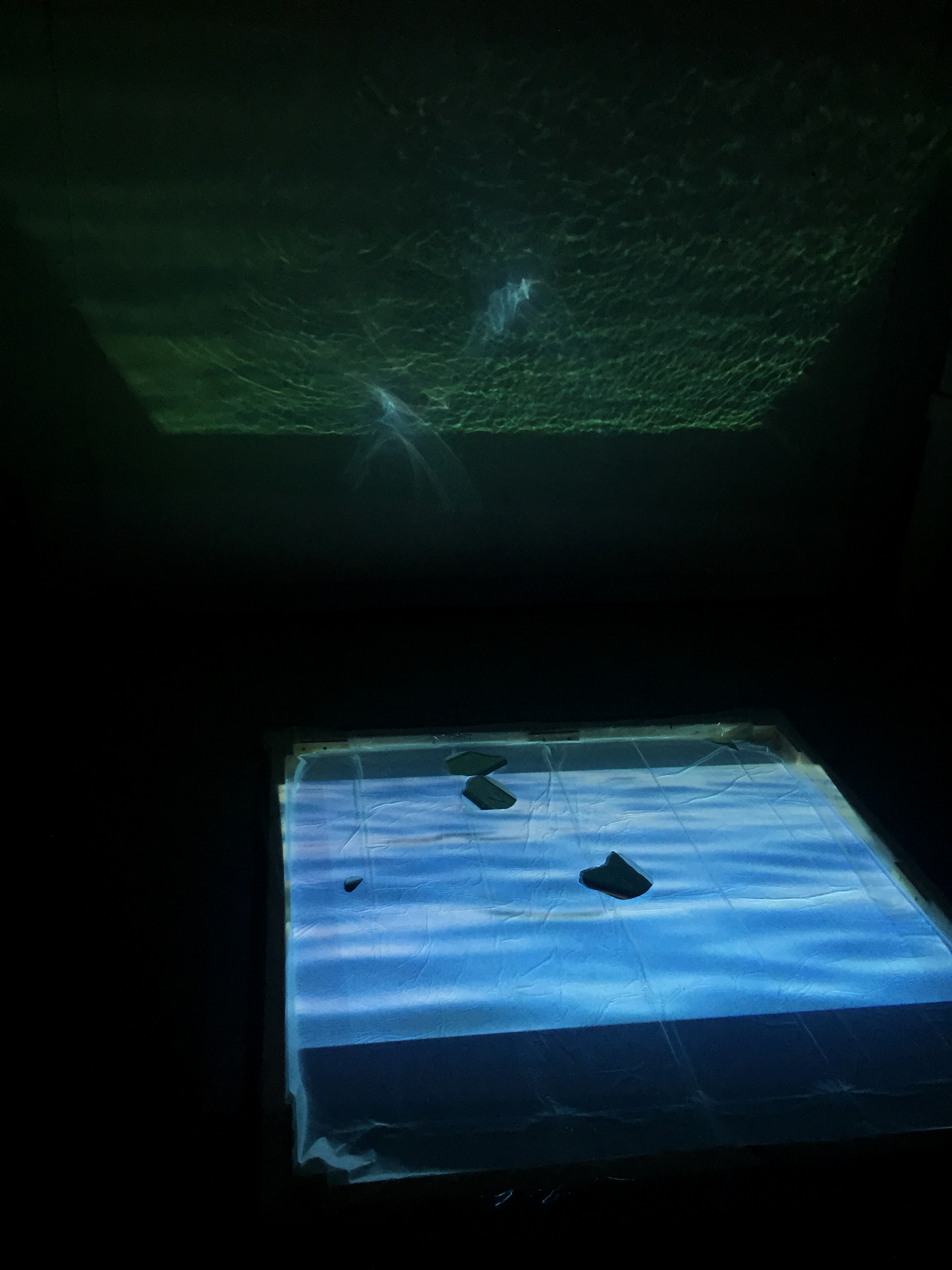Work samples
-
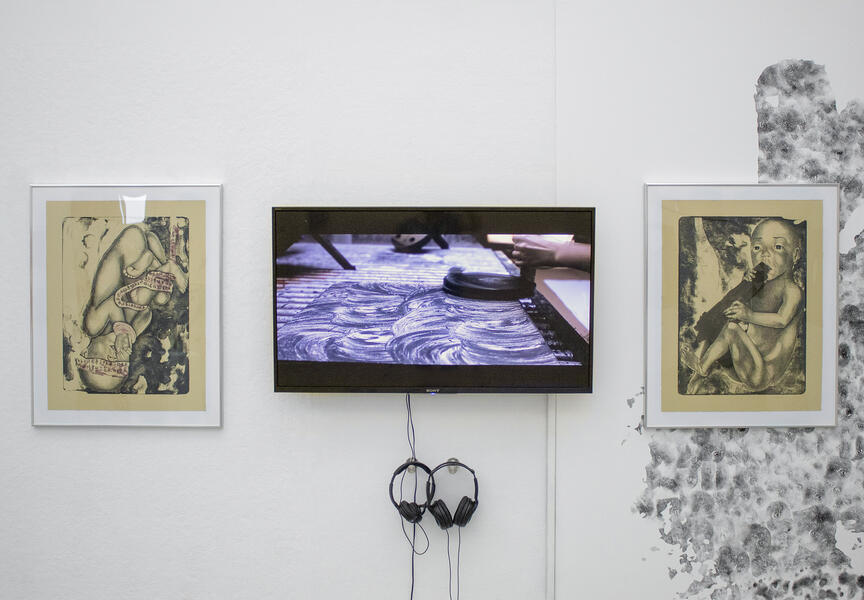 To Be or Not to Be?Lithographs and video | Variable Dimensions | As an empathetic person who processes debilitating tragedies through art, I have decided that while life may be worth continuing, it is not worth starting. Whereas the instances that informed my decision are US-specific—namely the separation of migrant children and their families, as well as rampant school shootings—they are indicative of a universal condition. Through my multimedia triptych, To Be or Not to Be?, I question whether life is a gift or a curse, a choice or an imposition.
To Be or Not to Be?Lithographs and video | Variable Dimensions | As an empathetic person who processes debilitating tragedies through art, I have decided that while life may be worth continuing, it is not worth starting. Whereas the instances that informed my decision are US-specific—namely the separation of migrant children and their families, as well as rampant school shootings—they are indicative of a universal condition. Through my multimedia triptych, To Be or Not to Be?, I question whether life is a gift or a curse, a choice or an imposition. -
 To Be…Lithograph | 26” x 20” | Working with the entire lithographic limestone as the matrix/womb, I reflect on the fact that we never consented to being born. I wonder what we would do if we, as fetuses, knew what we were in for. In other words, I ponder whether life is, as Confucius said, "a gift from our parents," or a curse in disguise.
To Be…Lithograph | 26” x 20” | Working with the entire lithographic limestone as the matrix/womb, I reflect on the fact that we never consented to being born. I wonder what we would do if we, as fetuses, knew what we were in for. In other words, I ponder whether life is, as Confucius said, "a gift from our parents," or a curse in disguise. -
To Be or Not to Be? (three-minute excerpt)3’ excerpt | 16'11" run time (looping) | Cinematography by Jeffrey Chance | The video documents me graining down the stone/matrix/womb that houses the fetus in the first lithograph. A compilation of newborn infants’ cries plays backwards as I repetitively smooth out the surface of the stone/womb with a levigator and carborundum grits. After a laborious sixteen-minute session, the fetus in the womb is completely erased.
About Danqi
Baltimore City
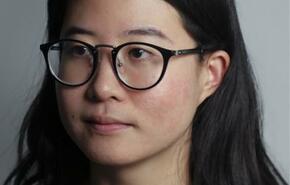
Danqi Cai was born in Nanchang, China in 1996 and raised in Shenzhen, China. She graduated BFA summa cum laude from the Maryland Institute College of Art (MICA) in 2019, where she double majored in Printmaking & Humanistic Studies and concentrated in Graphic Design and Book Arts.
Danqi has shown widely in regional, national and international juried exhibitions. In 2018, she participated in the Salt City Dozen portfolio exchange, won first and third places in the… more
Jump to a project:
To Be or Not to Be? (2018–2019)
As an empathetic person who processes debilitating tragedies through art, I have decided that while life may be worth continuing, it is not worth starting. Whereas the instances that informed my decision are US-specific—namely the separation of migrant children and their families, as well as rampant school shootings—they are indicative of a universal condition. Through my multimedia triptych, To Be or Not to Be?, I question whether life is a gift or a curse, a choice or an imposition.
Working with the entire lithographic limestone as the matrix/womb, I reflect on the fact that we never consented to being born. I wonder what we would do if we, as fetuses, knew what we were in for. In other words, I ponder whether life is, as Confucius said, "a gift from our parents," or a curse in disguise.
The video documents me graining down the stone/matrix/womb that houses the fetus in the first lithograph. A compilation of newborn infants’ cries plays backwards as I repetitively smooth out the surface of the stone/womb with a levigator and carborundum grits. After a laborious sixteen-minute session, the fetus in the womb is completely erased.
The same fetus reincarnates in the now-vacant womb in the second lithograph, this time pointing a gun to her mouth. Once reluctantly born, she goes back in time to the womb. Knowing how her life would turn out, she can now decide whether to be born or not.
Working with the entire lithographic limestone as the matrix/womb, I reflect on the fact that we never consented to being born. I wonder what we would do if we, as fetuses, knew what we were in for. In other words, I ponder whether life is, as Confucius said, "a gift from our parents," or a curse in disguise.
The video documents me graining down the stone/matrix/womb that houses the fetus in the first lithograph. A compilation of newborn infants’ cries plays backwards as I repetitively smooth out the surface of the stone/womb with a levigator and carborundum grits. After a laborious sixteen-minute session, the fetus in the womb is completely erased.
The same fetus reincarnates in the now-vacant womb in the second lithograph, this time pointing a gun to her mouth. Once reluctantly born, she goes back in time to the womb. Knowing how her life would turn out, she can now decide whether to be born or not.
-
 To Be or Not to Be?Lithographs and video | Variable Dimensions | As an empathetic person who processes debilitating tragedies through art, I have decided that while life may be worth continuing, it is not worth starting. Whereas the instances that informed my decision are US-specific—namely the separation of migrant children and their families, as well as rampant school shootings—they are indicative of a universal condition. Through my multimedia triptych, To Be or Not to Be?, I question whether life is a gift or a curse, a choice or an imposition.
To Be or Not to Be?Lithographs and video | Variable Dimensions | As an empathetic person who processes debilitating tragedies through art, I have decided that while life may be worth continuing, it is not worth starting. Whereas the instances that informed my decision are US-specific—namely the separation of migrant children and their families, as well as rampant school shootings—they are indicative of a universal condition. Through my multimedia triptych, To Be or Not to Be?, I question whether life is a gift or a curse, a choice or an imposition. -
 To Be…Lithograph | 26” x 20” | Working with the entire lithographic limestone as the matrix/womb, I reflect on the fact that we never consented to being born. I wonder what we would do if we, as fetuses, knew what we were in for. In other words, I ponder whether life is, as Confucius said, "a gift from our parents," or a curse in disguise.
To Be…Lithograph | 26” x 20” | Working with the entire lithographic limestone as the matrix/womb, I reflect on the fact that we never consented to being born. I wonder what we would do if we, as fetuses, knew what we were in for. In other words, I ponder whether life is, as Confucius said, "a gift from our parents," or a curse in disguise. -
To Be or Not to Be? (three-minute excerpt)3’ excerpt | 16'11" run time (looping) | Cinematography by Jeffrey Chance | The video documents me graining down the stone/matrix/womb that houses the fetus in the first lithograph. A compilation of newborn infants’ cries plays backwards as I repetitively smooth out the surface of the stone/womb with a levigator and carborundum grits. After a laborious sixteen-minute session, the fetus in the womb is completely erased.
-
 … or Not to Be?Lithograph | 26” x 20” | The same fetus reincarnates in the now-vacant womb in the second lithograph, this time pointing a gun to her mouth. Once reluctantly born, she goes back in time to the womb. Knowing how her life would turn out, she can now decide whether to be born or not.
… or Not to Be?Lithograph | 26” x 20” | The same fetus reincarnates in the now-vacant womb in the second lithograph, this time pointing a gun to her mouth. Once reluctantly born, she goes back in time to the womb. Knowing how her life would turn out, she can now decide whether to be born or not.
The Anatomy of the Printing Matrix (2019)
Print media is based on the life-giving, regenerative matrix, the Latin origin of which is “womb.” Nevertheless, much literature on printmaking focuses on its mechanical reproductivity, which resulted from print media’s history of translating other mediums into a print format.
I am much more interested in printmaking’s metaphorical, biological reproductivity, and made this triptych as a response. The images in it come from William Hunter's The Anatomy of the Human Gravid Uterus Exhibited in Figures, a collection of 34 copper plate engravings of the pregnant womb.
This triptych has three goals. First, to highlight the much-overlooked kinship between matrix and womb. Secondly, to collapse printmaking’s literal, mechanical reproductivity, and its metaphorical, biological reproductivity. Lastly, to celebrate the matrix itself as the artwork.
I am much more interested in printmaking’s metaphorical, biological reproductivity, and made this triptych as a response. The images in it come from William Hunter's The Anatomy of the Human Gravid Uterus Exhibited in Figures, a collection of 34 copper plate engravings of the pregnant womb.
This triptych has three goals. First, to highlight the much-overlooked kinship between matrix and womb. Secondly, to collapse printmaking’s literal, mechanical reproductivity, and its metaphorical, biological reproductivity. Lastly, to celebrate the matrix itself as the artwork.
-
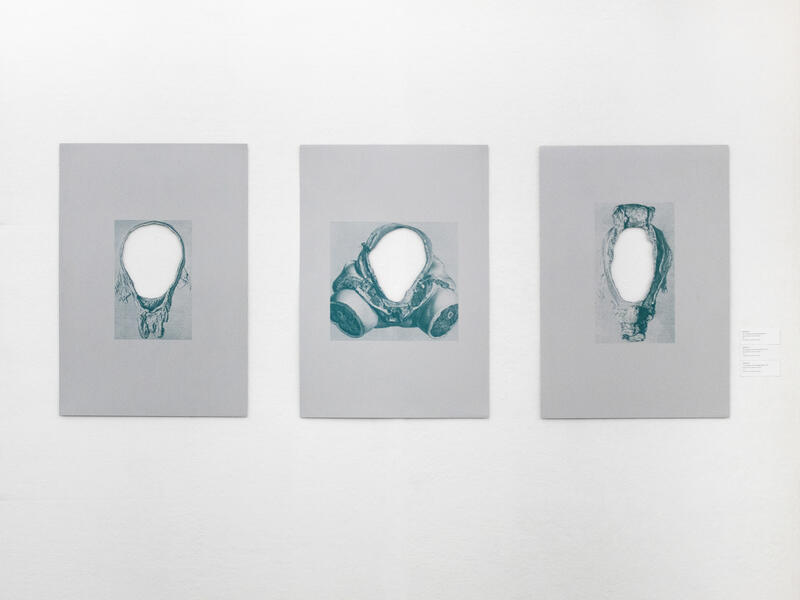 The Anatomy of the Printing MatrixInked, hand-cut photo litho plate 32.18" x 22.31" (x3)
The Anatomy of the Printing MatrixInked, hand-cut photo litho plate 32.18" x 22.31" (x3) -
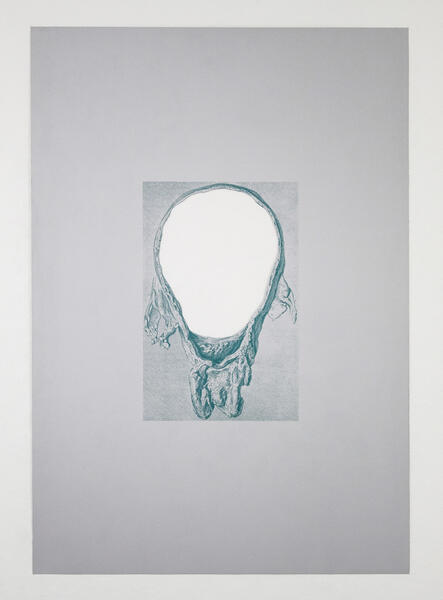 The Anatomy of the Printing MatrixInked, hand-cut photo litho plate 32.18" x 22.31" (x3)
The Anatomy of the Printing MatrixInked, hand-cut photo litho plate 32.18" x 22.31" (x3) -
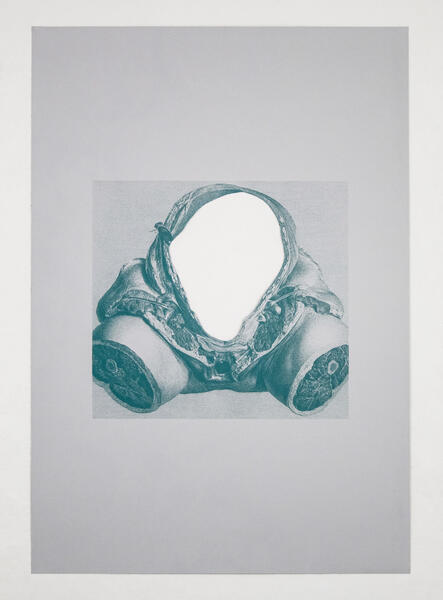 The Anatomy of the Printing MatrixInked, hand-cut photo litho plate 32.18" x 22.31" (x3)
The Anatomy of the Printing MatrixInked, hand-cut photo litho plate 32.18" x 22.31" (x3) -
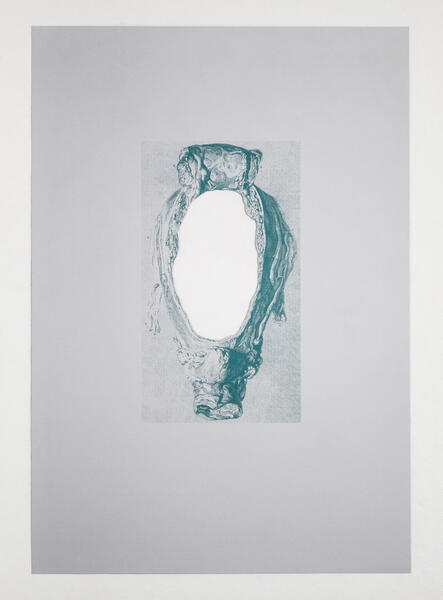 The Anatomy of the Printing MatrixInked, hand-cut photo litho plate 32.18" x 22.31" (x3)
The Anatomy of the Printing MatrixInked, hand-cut photo litho plate 32.18" x 22.31" (x3)
“AHHHH” (2018)
As the Chinese government calls for women to have children to ease the population crisis exacerbated by the decades-long one-child policy, I utilize my adult body and my one-year-old portrait to question whether a government can turn population on and off like a water faucet.
Self Portrait/One Plus One (2018)
The form and the content of Self Portrait/One Plus One together accentuate the concept of the generative matrix and that of the multiple: not only in papermaking, but also in how life begins.
Each of the 23 pages of the Japanese-bound book had portraits of my mom and my dad blown into it as watermarks during sheet-forming, before being folded and bound. Varying both the sequence and the orientation of the portraits, each page is a unique fusion of my parents, such is each pair of my chromosomes.
The end product is a representation of the genetic makeup of me as a zygote, one that would multiply to become who I am today.
Each of the 23 pages of the Japanese-bound book had portraits of my mom and my dad blown into it as watermarks during sheet-forming, before being folded and bound. Varying both the sequence and the orientation of the portraits, each page is a unique fusion of my parents, such is each pair of my chromosomes.
The end product is a representation of the genetic makeup of me as a zygote, one that would multiply to become who I am today.
-
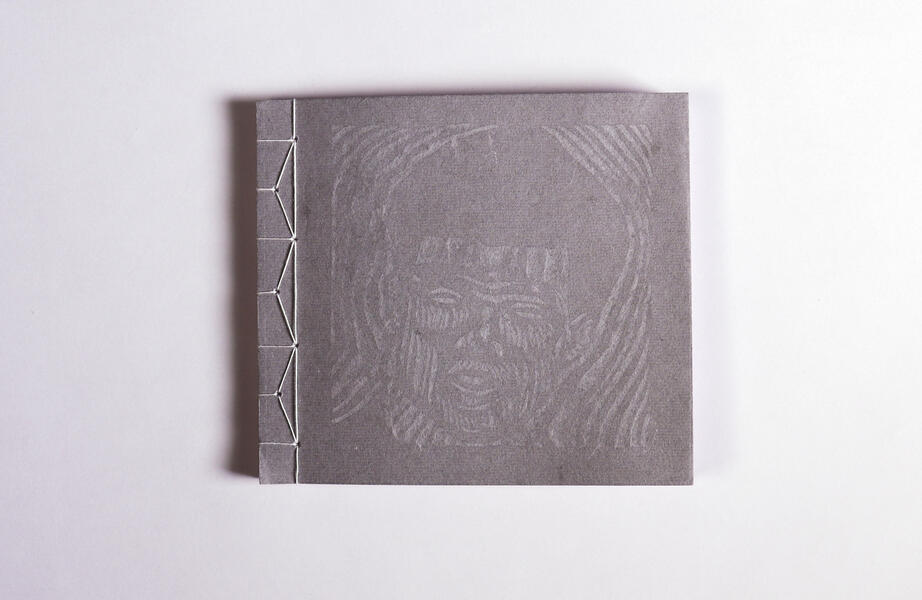 Self Portrait/One Plus OneHandmade paper (cotton linter and abaca), thread 4.75” x 5.375” x 0.3125" (closed)
Self Portrait/One Plus OneHandmade paper (cotton linter and abaca), thread 4.75” x 5.375” x 0.3125" (closed) -
 Self Portrait/One Plus OneHandmade paper (cotton linter and abaca), thread 4.75” x 5.375” x 0.3125" (closed)
Self Portrait/One Plus OneHandmade paper (cotton linter and abaca), thread 4.75” x 5.375” x 0.3125" (closed) -
 Self Portrait/One Plus OneHandmade paper (cotton linter and abaca), thread 4.75” x 5.375” x 0.3125" (closed)
Self Portrait/One Plus OneHandmade paper (cotton linter and abaca), thread 4.75” x 5.375” x 0.3125" (closed)
One Hundred (Would Be) Daughters (2018)
One Hundred (Would Be) Daughters is a 35.5” x 95.5” scroll made of 18 stone lithographs of a single regenerative matrix that extends both vertically and horizontally. It evolves from a single “pattern block” to be literally larger-than-life, just like how our lives begin through the replication of cells.
The lithographic scroll references both the “One Hundred Sons” motif popular in ancient Chinese art and the use of pattern block in ancient Chinese bronze-casting. Commenting on the current gender imbalance in China, it explores the irony of people not wanting daughters yet desperately needing mothers for the next generation.
The lithographic scroll references both the “One Hundred Sons” motif popular in ancient Chinese art and the use of pattern block in ancient Chinese bronze-casting. Commenting on the current gender imbalance in China, it explores the irony of people not wanting daughters yet desperately needing mothers for the next generation.
Your Body Is but a Vessel (2017)
Murder; Suicide (Grey) and the following two prints were inspired by the death of a 26-year-old pregnant Chinese woman, Ma Rongrong, who had no access to epidural anesthesia and was denied a C-section to relieve her unbearable pain during childbirth. On August 31, 2017, she jumped from her hospital labor room, killing herself and her baby. Deprived of the control over her own body, she reclaimed it with her final leap.
This Is Water (2017)
According to Buddhist literature, we are conditioned to overlook the impermanence of life. We do not see things as they are because our minds are like bowls of water that are ruffled by the wind, making it impossible for us to see clear reflections.
In This Is Water, we project a video of water onto a pool of water with floating pieces of reflective mylar. The pool of water refracts the video of water onto the wall, amplifying the ripples. We programmed an Arduino to turn a fan on-and-off every 30 seconds. The refracted water thus shows the ruffling of the wind and how it vanish almost as soon as it appears.
In Collaboration with Sean Dong
In This Is Water, we project a video of water onto a pool of water with floating pieces of reflective mylar. The pool of water refracts the video of water onto the wall, amplifying the ripples. We programmed an Arduino to turn a fan on-and-off every 30 seconds. The refracted water thus shows the ruffling of the wind and how it vanish almost as soon as it appears.
In Collaboration with Sean Dong
My Badge Says I Can Do No Wrong. My Badge Says I Can Do No Wrong? My Badge Says I Can Do No Wrong. (2016)
My Badge Says I Can Do No Wrong consists of two rows of six 10" x 10" prints. In the top row are three portraits of the police officer Betty Shelby, interrupted by a portrait of Terence Crutcher, and followed by two more portraits of Shelby. Similarly, the bottom row consists of two portraits of the judge Aaron Persky, interrupted by a portrait of Brock Turner, and then followed by three more portraits of Persky. Both the portraits of Shelby and those of Persky have a sense of graininess from the woodblock. Both are printed over with just enough transparency to tell who they are, thus highlighting their badges, suits and uniforms. In other words, cultural signifiers of the category of authorities are singled out.
This project shows how categories of persons (in this case, authorities) are performative and need to be repeated so as to establish themselves. However, each time a category is repeated, there's a chance that it could be disrupted. These two rows of prints indicate the repetition and the disruption.
This project shows how categories of persons (in this case, authorities) are performative and need to be repeated so as to establish themselves. However, each time a category is repeated, there's a chance that it could be disrupted. These two rows of prints indicate the repetition and the disruption.
-
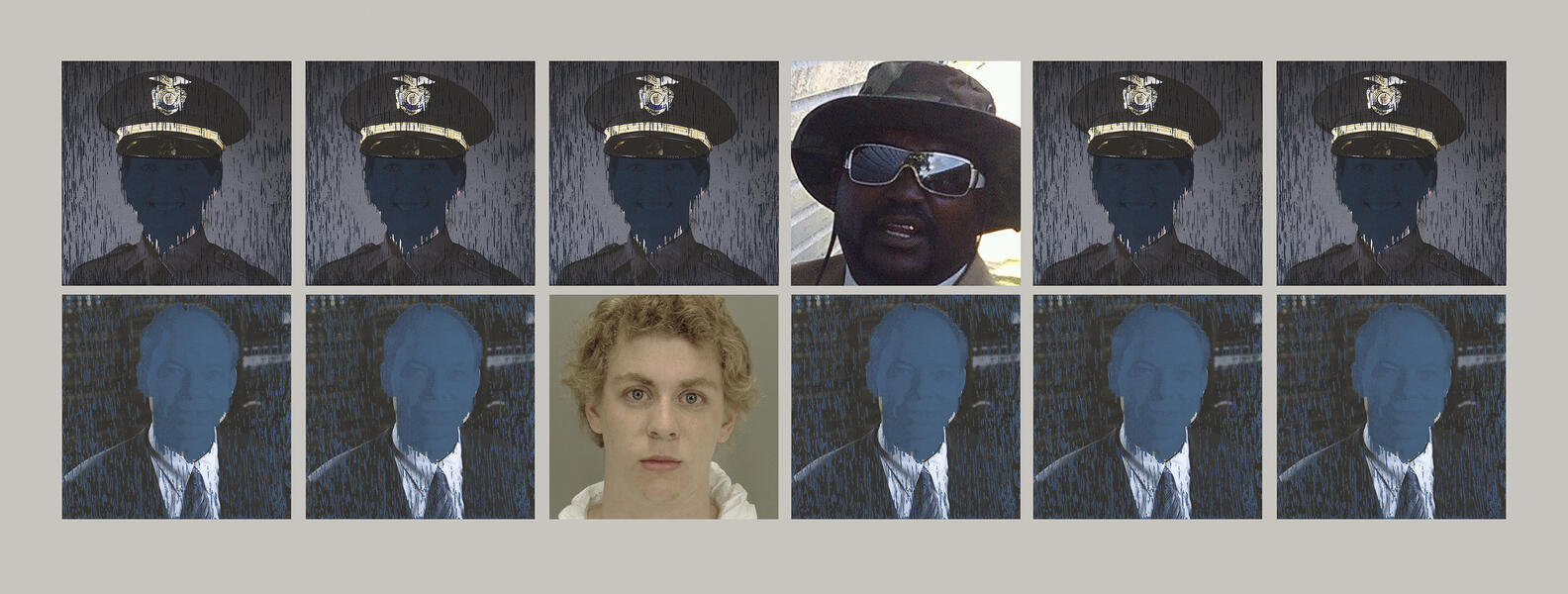 My Badge Says I Can Do No Wrong. My Badge Says I Can Do No Wrong? My Badge Says I Can Do No Wrong.Inkjet print and woodcut 10” x 10” (x12)
My Badge Says I Can Do No Wrong. My Badge Says I Can Do No Wrong? My Badge Says I Can Do No Wrong.Inkjet print and woodcut 10” x 10” (x12) -
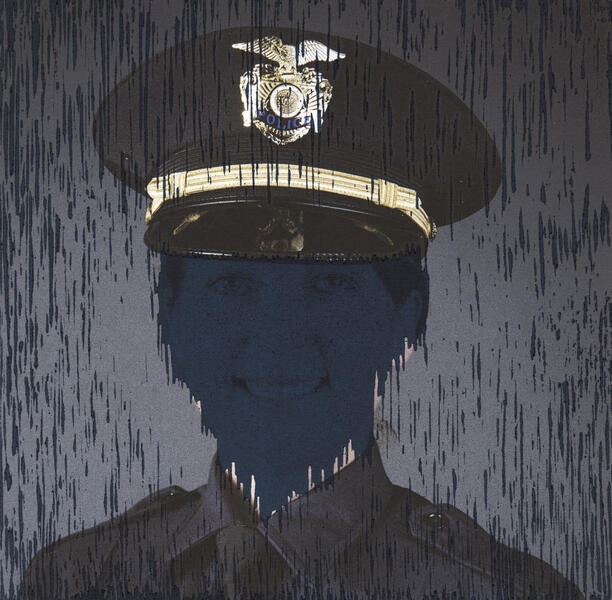 My Badge Says I Can Do No Wrong. My Badge Says I Can Do No Wrong? My Badge Says I Can Do No Wrong.Inkjet print and woodcut 10” x 10” (x12)
My Badge Says I Can Do No Wrong. My Badge Says I Can Do No Wrong? My Badge Says I Can Do No Wrong.Inkjet print and woodcut 10” x 10” (x12) -
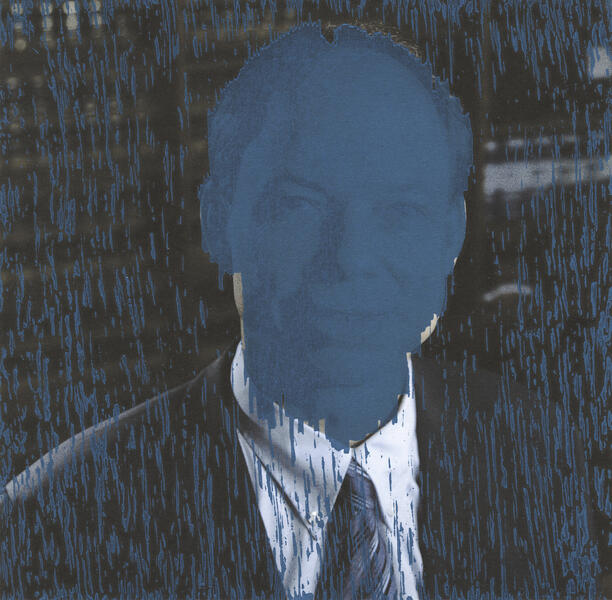 My Badge Says I Can Do No Wrong. My Badge Says I Can Do No Wrong? My Badge Says I Can Do No Wrong.Inkjet print and woodcut 10” x 10” (x12)
My Badge Says I Can Do No Wrong. My Badge Says I Can Do No Wrong? My Badge Says I Can Do No Wrong.Inkjet print and woodcut 10” x 10” (x12)



